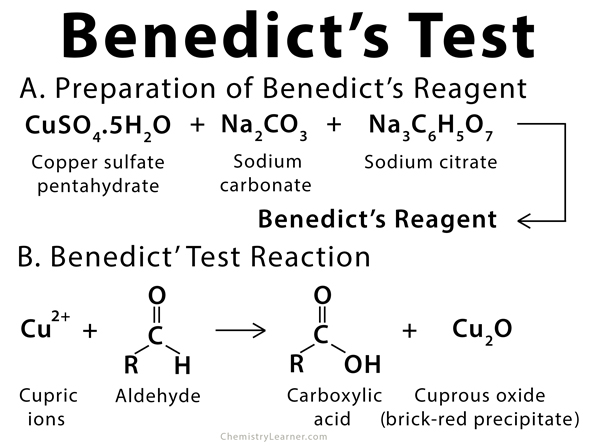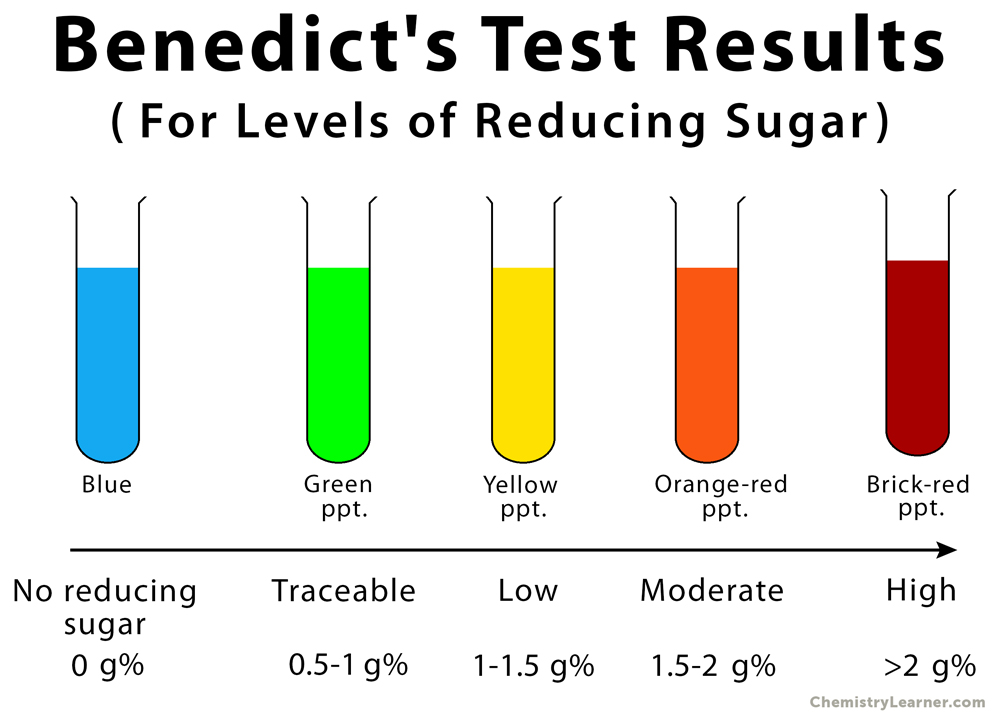What is Benedict’s Test?
Benedict’s test is a simple chemistry test used to detect reducing sugars. Reducing sugars are carbohydrates having free aldehyde or ketone functional group in its molecular structure. These include monosaccharides like glucose and fructose and disaccharides like lactose and maltose.
Benedict’s Reagent (Benedict’s Solution)
Benedict’s reagent is the solution used in Benedict’s test to detect simple sugars such as glucose. It is a bright blue solution prepared by mixing copper sulfate pentahydrate (CuSO4. 5H2O), sodium citrate (Na3C6H5O7), and sodium carbonate (Na2CO3) in distilled water.
Principle of Benedict’s Test
Benedict’s test is performed by heating the reducing sugar with Benedict‘s reagent. The presence of the alkaline sodium carbonate converts the sugar into a strong reducing agent called enediols. During the reduction reaction, the mixture will change its color from blue to brick-red precipitate due to the formation of cuprous oxide (Cu2O). Copper in its cupric (Cu2+) or copper (I) form is reduced to cuprous (Cu+) or copper (II). The red-colored cuprous oxide is insoluble in water and hence, separated. If the concentration of the sugar is high, then the color becomes more reddish, and the volume of the precipitate increases.
Benedict’s Test with the Reagent: Procedure and Results
A mixture containing the reducing sugar (~ 8 drops of urine) and Benedict’s solution (~5 ml) are heated in a test tube for two minutes and allow it to cool. The color of the mixture will change accordingly resulting in precipitates, which indicates positive results. The results of the test can be summarized in the table below.
Uses and Application of Benedict’s Test
Benedict’s test is used to detect the presence of glucose in blood and urine. Excess glucose can lead to diabetes.
FAQs
Q.1. Does complex carbohydrate give positive results in Benedict’s test?
Ans. Complex carbohydrate like starch and cellulose does not give a positive result in Benedict’s test unless they are broken down through heating.
Q.2. What is the difference between Benedict’s test and Barfoed’s test?
Ans. Benedict’s test is used to determine the presence of reducing sugar. In contrast, Barfoed’s test is used to find if the sugar is monosaccharide or disaccharide.
Q.3. Why is glucose called reducing sugar?
Ans. Glucose is called reducing sugar because it is capable of transferring hydrogen to other compounds. Such a process is known as reduction or redox reaction.












0 Comments